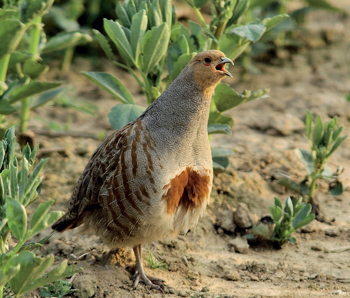Thirty years ago I was walking on heathland near Exeter when a large covey of wild grey partridges exploded upwards. Recounting this to an old Westcountry farmer recently, he muttered, Well, I doubt whether youd find one within 20 miles of Exeter now the badgers have got em all.
Badgers have done well out of their old brock status. Bill Oddies Springwatch programmes and a vigorous animal activist movement have made them the sacred cows of the countryside (while the real ones die of TB). Given this, its been encouraging to see that the RSPB had included them among its list of predators in its recent publication, The Predation of Wild Birds in the UK.
Its not a scientific paper published in a scientific journal and peer reviewed, but it does present much of the research done in this area, including that by The Game and Wildlife Conservation Trust (formerly The GCT). Its doubtful whether that organisation would agree with the RSPBs conclusions on all of its research; there is, yet again, an attempt to blur the hard truth that hen harriers did indeed bring about the collapse of Langholm Moor. But there are signs that the RSPB is moving slowly towards a public stance of supporting some predator control.
It records that cats probably kill millions of birds each year. And though it comes decked with myriad riders and qualifications, it accepts that predation can limit grouse populations at low density and reduce shooting bags to the point at which driven-grouse shooting becomes untenable.
But dont pop too many corks yet. The report makes plain that the RSPB considers there to be two classes of wildlife managers: the conservation managers, à la RSPB, whose priority is the establishment of a stable or growing breeding stock; and game managers, who want a good breeding stock but also need an autumn surplus for shooting.
The RSPBs distinction should alert those embarking on the new research initiative known as Langholm 2, which will explore whether hen harriers and grouse can co-exist if the former are fed a diet of dead white rats. If the grouse breeding numbers are sustained, but not the surplus, the RSPB would still consider that sound conservation.
There are also some warning notes about how the RSPB views reared game. While it accepts that populations of buzzards, sparrowhawks, magpies and carrion crows have increased strongly over the past 35 years, it points to one of the causes being the release of non-native pheasants and red-legged partridges. And thats fair. Theres a commercial partridge-shoot in Wiltshire, which has an unrivalled display of spiralling buzzards, crows and ravens. Ravens? We used to see them only in moors or the Tower.
Encouragingly, theres no attempt to hide the disaster that has hit many ground-nesting birds. The breeding curlew population in Wales and Scotland halved between 1994 and 2005; in Northern Ireland 95 per cent of breeding attempts failed. Golden plover and lapwing have also suffered but not, the report notes, on grouse moors, where they and curlew do better than on others.
Common sense has also been restored to Abernethy, whose rare population of capercaillie was subject to an odd experiment to see what would happen if carrion crow control were stopped. To no ones surprise, the inevitable happened and control resumed. A similar story concerns the blackgame. In a project run by the RSPB in Wales, habitat was improved and fox, crow and stoat control took place on some of these sites as part of the shooting management. By the end of the project, male blackgrouse numbers had risen by 85 per cent.
While presumably happy with this result, the RSPB is deeply uncomfortable with using lethal means itself to control predators. Dr Mark Avery, the director of conservation, says its strong preference is to concentrate on habitat measures that favour the prey species and make life more difficult for the predator. Electric fences to protect lapwings from foxes, bells for cats and conditioned taste aversion are all mooted as ideas that need more exploration and trial.
Given its membership, its easy to understand why the RSPB would prefer such methods. But the awkward truth is that they cant work the lapwings fortunes will not be reversed by a few nature reserves being fenced off. If the Society wishes to achieve a real difference in our birdlifes fortunes, it has to embrace those who own the majority of land and who have the motivation to improve habitat and control predators.
It may be comfortable for the RSPB to differentiate between the two types of manager but its unhelpful. Grain prices will continue to rise and the chances of arable land being set aside for wildlife habitat grow remoter. Only gameshooters have the budget, inclination and acreage to improve habitat and control the predators. Without us, wildlife would be left with palatable words, beautifully presented, but a bleak future.





